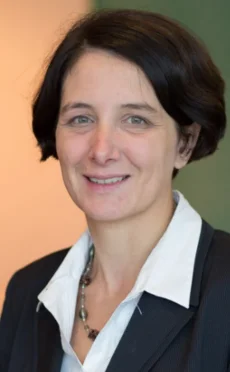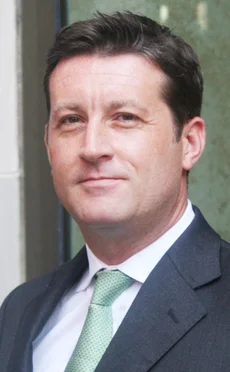
This article was paid for by a contributing third party.More Information.
New investor solutions for inflationary markets

Geopolitical risks, price volatility, clashing cycles, higher interest rates – these are tough times for economies and investors. Ahead of the 2022 Societe Generale/Risk.net Derivatives and Quant Conference, Risk.net spoke to the bank’s team about some of the key challenges, risks and opportunities for investors seeking to adapt their strategies for a new era
The panel
- Klaus Baader, Global chief economist
- Sandrine Ungari, Head of cross-asset quantitative research
- Michael Haigh, Global head of commodities research and strategy
Klaus, Sandrine and Michael are among the speakers at the Societe Generale/Risk.net Derivatives and Quant Conference, October 13–14, 2022
After years of relatively benign conditions, global economies and markets have been caught off-guard by a unique set of factors leading to rampant inflation. To what extent is a global recession inevitable, and what can be done to lessen the impact?

Klaus Baader: I don’t think a global recession is inevitable – at least in the near term. There are several factors that offer resilience. First, labour markets are incredibly tight. Unemployment is very low and, although there will be redundancies, the high number of unfilled vacancies means fear of unemployment is low too. Second, there has been a huge build-up of household savings, well beyond the pre-Covid-19-crisis trend. Accumulated savings account for around 10% of GDP in the US, 13% in Australia, 7% in Europe and are also very high in Japan. Although consumers are starting to dip into these savings, it’s at a slow rate and they could do this for a long time. Meanwhile wage growth continues to accelerate.
The other point is that US financial conditions indexes are still in loose territory. Both the Federal Reserve Bank of Chicago’s National Financial Conditions Index and the St Louis Fed Financial Stress Index are still well below the neutral line. Markets are concerned, but potentially for the wrong reasons.
There is a lot of talk about the US, but we don’t expect a recession there until 2024 and don’t expect the eurozone to go into recession at all – although it is likely to come very close, and Germany will experience a couple of negative quarters.
What I worry about is China, because China’s growth problems are not just cyclical, but deep-seated across the whole growth model. Housing is incredibly important in that respect and, with the regulatory steps the Chinese authorities have taken, we are seeing a dramatic decline in housing sales and even mortgage boycotts, shattering confidence in the housing market. We also see the effects of the ‘zero-Covid’ policy, which makes people very hesitant and threatens consumption. There doesn’t seem to be appetite to take steps to remedy these issues. This is an important point because we have to take governments’ responses into consideration.
Recently, we’ve seen predictions of UK inflation going to 16% or 18%. This makes sense when assuming a certain gas price but, when I heard those predictions, my immediate reaction was that it would be possible, but I have a hard time believing a government will let this happen. And we’ve already seen announcements from the UK government responding to this.
Where are the bright spots in the forecast for investors?
Klaus Baader: For investors, particularly those without debt, there is an upside to interest rates going up. Cash will also become an asset class worth looking at again although, naturally, it raises the downside risks on other asset classes.
Michael Haigh: In terms of commodities, there are bright spots. Once you move beyond the shallow recession that Klaus discussed, commodities are still on an upward trajectory. There are particular bright spots on the metals side.
Investor appetite for environmental, social and governance (ESG) investing is contributing to the problem of greenflation, placing inflationary pressure on commodities markets central to the longer-term goals of the energy transition and decarbonisation. Do you see any solutions to this conundrum?
Michael Haigh: The energy crisis in Europe actually began before Russia invaded Ukraine. Part of the reason was China trying to reduce coal usage in metal, power plants and smelters, and therefore switching to gas. This increased energy flow to Asia and reduced it to Europe, so we went into winter with low storage. This was, of course, compounded by the war in Ukraine.
Greenflation came about because of a mismatch where supply was being managed but demand wasn’t. From a commodities standpoint, rising gas prices make metal prices more expensive, and there is strong demand for elements you would use to transition from hydrocarbons, such as silver, copper, aluminium and nickel. At the same time, traditional commodities, such as oil and even gas, were being shunned not only by investors on the equity side, but also by those investing in the companies and banks making lending decisions.
It has become apparent this war is not going to be a quick event, and we need other sources of energy such as solar panels and offshore wind farms. However, this can’t happen overnight, and we are seeing countries reverse their positions on using coal and nuclear. In fact, it may be that we realise we were trying to move too fast and need to use coal and traditional commodities in the smelting of metal in the medium term while we work to get rid of coal. For metal production, in particular, the issue is the sheer amount of energy required.
In short, there is no simple solution to managing this transition. It will be rocky.
Investors have enjoyed an exceptional decade, with a typical 60/40 bonds/equities portfolio delivering strong and consistent returns, assisted by negative correlation. What should investors do in the current environment to avoid a sharp reversal of fortune?

Sandrine Ungari: Quantitative tightening poses considerable risks to equities and traditional assets. In our research, we developed a framework to characterise macro risks. As it turns out, two-thirds of the price moves in global financial markets can be explained by three drivers: investors’ risk appetite; monetary and fiscal policies measured by the demand for bonds; and currencies’ dynamics against the US dollar. Over the past year, risk appetite has dropped, the demand for bonds has collapsed, and the US dollar is the strongest it has been since the beginning of this century. In this sort of environment, there is nowhere to hide, and it is particularly challenging to generate positive returns with a traditional approach to investment.
So, what can investors do? The Derivatives and Quant Conference will help answer this question. Derivatives trading and quantitative strategies are useful tools to provide diversification for traditional portfolios and will be discussed in several sessions during the conference. For example, systematically selling put spreads, systematically following trends, exploiting anomalies in the market microstructure and harvesting alternative carry in derivatives markets. All of those ideas would have been useful additions to traditional assets this year. Trend-following is a case in point. Some commodity trading adviser funds are up 30% and more year-to-date, and allocators are now looking closely at this investment style.
Building an efficient defensive overlay is also a topic that comes back very often in discussions with investors. The premise of these types of approach is based on diversification: it is very difficult to predict where the next downturn will come from – for example, whether it will be triggered by a global pandemic, a slowdown in China or a deterioration of the conflict in Ukraine. Will it be a tail event or a slow, grinding market downturn? Each of those scenarios can have massively diverse impacts on market prices. There is a benefit to mixing various investment styles within the same defensive or hedging overlay.
Risk parity strategies have proven vulnerable to significant shifts in correlation. What are the alternatives?
Sandrine Ungari: One of the most popular systematic strategies is risk parity in the world of long-only multi-asset portfolios. Risk parity consists of reducing positions in risky assets if volatility increases and allocating more to ‘risk-free’ assets such as government bonds, and vice versa. This clearly does not work when the risk-free assets are the risk. The success of risk parity over the past 20 years partially explains the triumph of passive investing over active management. But when bonds and equity prices move in sync, active managers become more relevant.
Researchers have also started to work on alternative approaches to risk parity. At the conference we will discuss two alternatives. The first is a ‘quantamental’ approach, grounded in a regime-based approach. The second one uses artificial intelligence to decide how to allocate across assets. Those two investment philosophies are very different by nature. Each of them might be the next alternative to risk parity.
What trends are you seeing in how investors are using derivatives and quant solutions? What product innovations are we likely to see in this area to help manage higher volatility?

Michael Haigh: With regard to commodities, carry strategies have been very successful in stable markets. But, when things move into backwardation and we get shocks to the upside, they’re going to suffer. To address this, we have developed beta-hedged carry solutions that can navigate through the current environment. Natural gas is always going to be an issue by its very nature, but that can be managed as well.
Sandrine Ungari: Speaking more broadly, there is a lot of innovation within the derivatives market focusing on tail-risk hedging. Designing a cost-effective tail-risk hedge is a big challenge. Hedging is akin to buying an insurance contract. Reducing the cost of this contract means taking some risks elsewhere or buying less efficient insurance. This is one of the most active areas of research for systematic traders. People are trying to better understand the dynamics of various hedging and tail-hedging strategies. We have been pioneering this at Societe Generale with our first tail hedge launched in 2016.
There is also ongoing research and innovation using some properties of the market microstructure as a bridge toward high-frequency trading. Intraday trend-following is one example. This strategy consists of following the crowd of day traders. It acts as a hedge against a deterioration of trading liquidity conditions. We are seeing innovations on risk premia associated with higher-order risk parameters in the equity market, such as volatility skew, gap risk, volatility term structure or the cost of funding. Outside equities and rates options are also an exciting market this year, with record levels of implied volatility and a lot of interest for complex payouts and strategies there.
What other topics and concerns do you expect to be top of mind for investors as they prepare for the Societe Generale/Risk.net Derivatives and Quant Conference?
Michael Haigh: We are seeing a lot of discussion and innovation around ESG. Much of the focus has been on the equity and fixed income side but, in commodities, we’ve started to evaluate the actual markets, so looking at wheat versus gas and silver, and so on. This means we’re now able to rank commodities. It’s a very interesting subject and a lot of the exchanges are developing new products to trade that are more ‘ESG-friendly’, such as cleaner aluminium or copper and responsibly sourced gold.
Sandrine Ungari: On the quantitative side, a key question is how you construct an ESG-friendly portfolio without introducing lots of biases. This is a complex question, where data and regulations are changing every month. Managing factor exposures and risks becomes key for a successful portfolio allocation.
Klaus Baader: One final topic I would like to raise is the role of central banks. Since 2010 we have seen the use of three non-standard monetary policy instruments: near-zero or negative interest rates, particularly negative interest rates, quantitative easing and forward guidance. At the conference I will talk to the former governor of the Bank of England, Mervyn King, about unorthodox monetary policy in what should be an extremely relevant discussion for delegates.
Further information
Sponsored content
Copyright Infopro Digital Limited. All rights reserved.
You may share this content using our article tools. Printing this content is for the sole use of the Authorised User (named subscriber), as outlined in our terms and conditions - https://www.infopro-insight.com/terms-conditions/insight-subscriptions/
If you would like to purchase additional rights please email info@risk.net
Copyright Infopro Digital Limited. All rights reserved.
You may share this content using our article tools. Copying this content is for the sole use of the Authorised User (named subscriber), as outlined in our terms and conditions - https://www.infopro-insight.com/terms-conditions/insight-subscriptions/
If you would like to purchase additional rights please email info@risk.net
